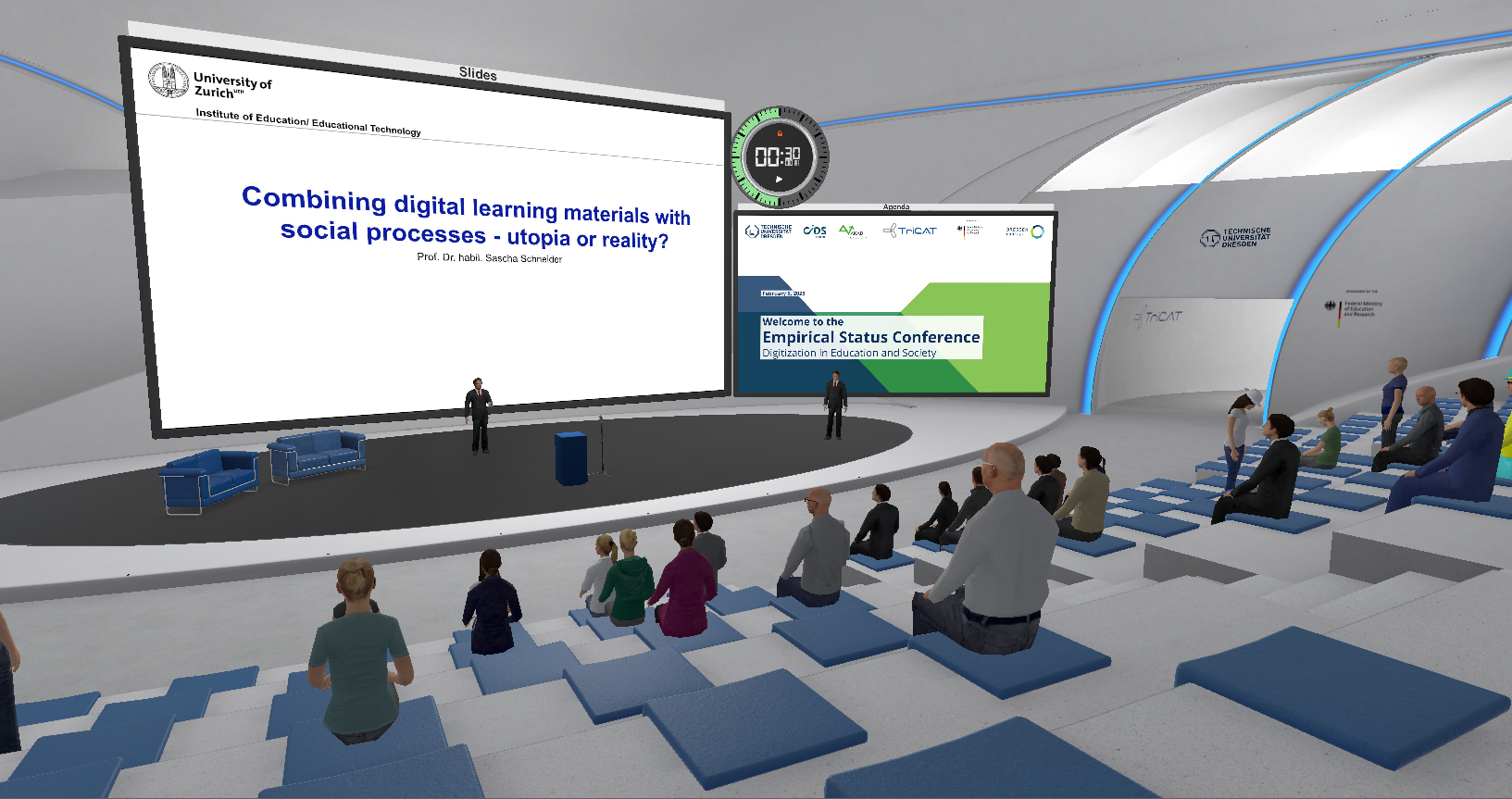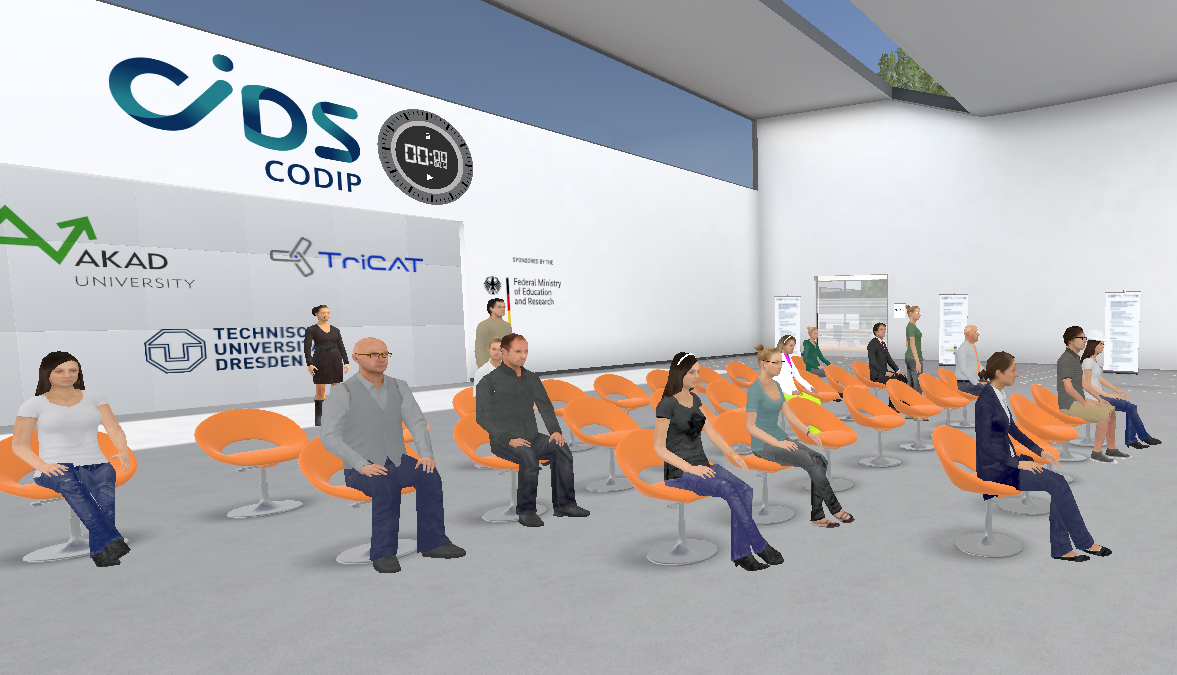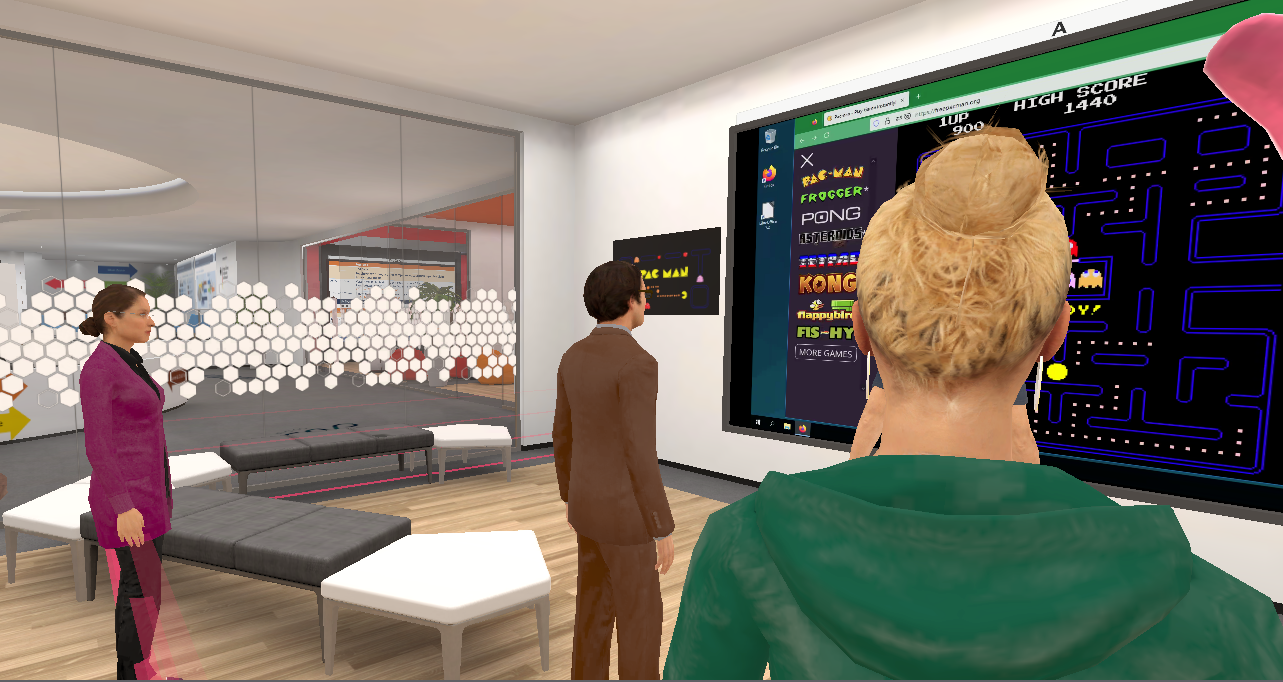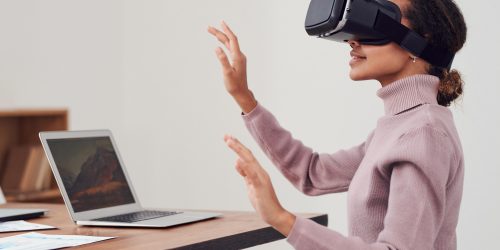Review: Empirical status conference on digitalization in education and society
On 06.02.2023, the virtual conference organized by CODIP took place “Empirical status conference on digitalization in education and society” In addition to the technical innovations presented, our research center also experienced a technical first. Instead of conventional video conferencing tools, immersive virtual reality (VR) software was used as the “venue” and meeting point.
Using the VR software “TriCAT Spaces Congress“ had the aim to scientific online conference to promote the spatial-situational experience and the feeling of social community, which are often noticeably reduced by the use of pure video conferencing systems. The organization took place within the framework of the research and development project “Connecting a Virtual Immersive 3D Learning Platform to the NBP using the domain example of an educational provider (AVILAB2)", which, in addition to the possibilities of connecting virtual 3D environments such as "TriCAT spaces" to the National Education Platform (NBP), also tests and researches their design and use for the specific application of scientific conferences. Participants can enter such immersive environments with their own avatar, navigate through the various conference rooms and communicate with other guests via voice or chat.
 Fig. 1: Prof. Dr. Sascha Schneider gives his keynote in the virtual conference environment (screenshot from TriCAT spaces Congress)
Fig. 1: Prof. Dr. Sascha Schneider gives his keynote in the virtual conference environment (screenshot from TriCAT spaces Congress)
The Conference programme was Prof. Dr. Sascha Scheider (University of Zurich), who delivered his keynote speech “Combining digital learning materials with social processes – utopia or reality?” in a virtual conference room (see Fig. 1). Afterwards, the more than 50 participants were able to take part in various sessions. Here, scientific staff from the project management AKAD University, from CODIP and from the structured graduate programme “Education & Technology” with lectures and posters, they provided current insights into their empirical research results (see Fig. 2). The participants actively used the breaks to exchange ideas with each other or to demonstrate their "Pac Man" skills in the virtual break room (see Fig. 3).
 Fig. 2: Participants follow a presentation in a session attentively (screenshot from TriCAT spaces Congress)
Fig. 2: Participants follow a presentation in a session attentively (screenshot from TriCAT spaces Congress)
In addition to the stimulating exchange and acquisition of specialist and methodological knowledge, the virtual event also served as a research subject to address fundamental questions about the suitability of so-called “Social VR” for scientific conference formats. A first pilot study with a very affine target group had shown a clearly positive trend. The research in the project builds on this and also analyses the cognitive-emotional user experience of the participants. The results of the accompanying research are currently being evaluated and are expected to be published in the course of the year. Further test events will follow.
 Fig. 3: Conference participants playing in the virtual break room (screenshot from TriCAT spaces Congress)
Fig. 3: Conference participants playing in the virtual break room (screenshot from TriCAT spaces Congress)
We provide you with current information on our website and in our publications. We would like to thank all participants for their keen interest and are already looking forward to the next event!
Further reading:
Liu, Q., & Steed, A. (2021). Social virtual reality platform comparison and evaluation using a guided group walkthrough method. Frontiers in Virtual Reality, 2, 668181.
Zender, R., Mulders, M. (2022). Scientific conferences in social virtual reality. eleed, 14, 1-14.
Funding information:

Authors: Jonathan Dyrna, Robert Lorenz, Josephine Obert







1 Response